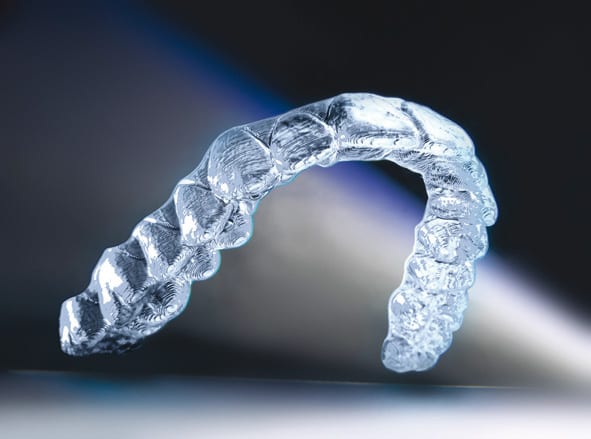Temporomandibular Joint Disorders (TMD) are a group of conditions affecting the joints and muscles that control jaw movement. Although not life-threatening, TMD can significantly affect quality of life by causing pain, limited movement, and chronic discomfort. It affects 5-12% of Americans, disproportionately impacting women and younger individuals. Whether the result of teeth grinding, bite misalignment, or muscle overuse, TMD requires proper diagnosis and multi-faceted care. This guide offers a breakdown of symptoms, causes, and actionable treatments.
Table of contents
How do you check if you have TMD?
Symptoms associated with TMD
TMD symptoms can range from minor irritation to severe pain and dysfunction. Many people don’t realize their symptoms are related to jaw joint issues until they become chronic or begin affecting daily activities like eating and speaking.
Common signs of TMD may include:
Frequent headaches or migraines without another identifiable cause
Ringing in the ears (tinnitus) or reduced hearing sensitivity
Pain radiating behind the eyes, through the face, neck, or upper back
Jaw locking, stiffness, or popping when opening and closing the mouth
Understanding TMD and Jaw Health
Why TMD Develops Over Time
TMD often results from mechanical or muscular strain on the temporomandibular joint. This strain can come from bruxism, poor dental alignment, jaw injuries, or repeated stress on the joint from everyday habits. In many cases, patients are unaware of the underlying issue until secondary symptoms arise.

Risks of Untreated TMD
Certain behavioral and physiological risk factors make some people more prone to TMD. These include stress-induced clenching, family history, or underlying mental health conditions. Stimulant use has also been shown to intensify jaw activity. Clinical data even links amphetamine use to a sixfold increase in TMJ complications.

Why is my TMJ pain getting worse?
Jaw pain associated with TMD can escalate into broader physical discomfort. Because the temporomandibular joint connects to a network of nerves and muscles, its dysfunction can trigger headaches, earaches, and even numbness across the neck and shoulders. Managing pain early is key to avoiding these wider complications.
Neurological Symptoms
When inflamed, the TMJ can impact adjacent nerves, leading to radiating pain or numbness. In severe cases, TMD may even affect areas as far-reaching as the arms or upper spine due to interconnected muscle tension and neural pathways.
Jaw Movement
Patients with TMD often report difficulty with simple actions like chewing or yawning. Jaw movement becomes painful or limited, and stiffness may increase over time. Moist heat, jaw exercises, and reduced jaw activity can temporarily ease these effects.

Diagnosing Temporomandibular Disorders
Confirm TMD with a Dentist
TMD diagnosis usually begins with a physical exam. Providers evaluate symptoms through palpation, motion testing, and joint auscultation. They may ask about sleep habits, jaw pain patterns, or past dental issues to gain a clearer understanding of potential causes.
Diagnostic Imaging for TMJ
Imaging such as X-rays, CT scans, or MRI may be ordered when structural damage is suspected. These scans reveal joint alignment, tissue condition, and inflammation levels. Diagnostic imaging helps rule out other possible causes of jaw pain, guiding the most effective treatment plan.
Treatment Paths for Mild and Moderate TMD
The Role of Orthodontics in Temporomandibular Disorders
Dentists and orthodontists are typically the first point of contact for TMD treatment. They evaluate bite patterns, assess alignment issues, and recommend oral appliances like night guards to protect the joint during sleep. In more advanced cases, they may refer patients to specialists for integrated care.
Custom Mouth Guards vs Store Bought
Yes. While store-bought mouthguards can offer temporary relief, custom-fit occlusal guards are designed to match a patient’s bite precisely, providing superior comfort and effectiveness. Dentists create these by measuring the jaw and molding a guard that distributes pressure evenly across the joint.
Jaw Strain, Headaches, and TMD
How to relieve TMJ pain quickly
Successful TMD treatment extends beyond the dental office. Self-care strategies can ease muscle tension, reduce flare-ups, and build daily habits that minimize discomfort. Consistency and lifestyle awareness play a critical role in long-term recovery.
Recommended at-home steps for TMD management include:
Applying ice or warm compresses to the affected area
Avoiding hard or chewy foods that strain the jaw
Performing gentle jaw exercises and massage techniques
Taking over-the-counter anti-inflammatories if needed
Using stress-reduction techniques to lower clenching behavior
For many patients, stress and behavioral patterns directly impact TMD severity. Chronic anxiety, unaddressed trauma, and stimulant use may intensify jaw tension. That’s why dental professionals often recommend counseling, CBT, or substance use support alongside physical treatments for comprehensive care.
TMJ, is it a permanent condition?
Temporomandibular joint disorders can present differently for every patient, which is why diagnosis requires a hands-on, thorough evaluation. Dental or medical providers will often begin with a clinical exam, checking jaw movement, alignment, and sensitivity. If symptoms suggest more serious joint dysfunction, diagnostic imaging may follow to identify internal inflammation or misalignment.
Common diagnostic steps include:
Palpating the jaw to assess pain, stiffness, or swelling
Listening for clicks or pops during jaw movement
Monitoring jaw alignment while opening and closing the mouth
Ordering imaging such as X-rays, CT scans, or MRIs
TMD Dental Specialists
Treating TMD usually requires a multi-pronged approach—especially if the root cause stems from bruxism, bite misalignment, or behavioral factors like stress or stimulant use. While some patients respond well to at-home remedies, others require medical interventions like custom occlusal guards or physical therapy. The goal is always to reduce joint strain, manage inflammation, and support long-term jaw stability.
Best Treatment for TMD
A dental or orthodontic provider will assess the severity of your condition. When malocclusion or bite force contributes to joint trauma, they may recommend a custom night guard or even Invisalign. These treatments are aimed at redistributing pressure evenly and preventing overnight clenching.
Common in-office treatment methods include:
Custom-fit occlusal guards for overnight jaw protection
Orthodontic correction using braces or clear aligners
Trigger-point injections or short-term muscle relaxants
Behavioral or cognitive therapy to reduce clenching
Home Care of TMJ
While professional support is critical, day-to-day habits play an equally important role. At-home remedies can help relieve symptoms, especially when used in tandem with medical care. Most providers recommend a combination of pain relief, dietary adjustments, and relaxation techniques to minimize jaw tension.
Recommended self-care measures:
Apply moist heat or cold packs to reduce inflammation
Eat soft foods to minimize jaw strain
Perform light jaw exercises to maintain mobility
Use over-the-counter pain relievers as needed
What is the 3 finger test for TMJ?
The three-finger test is an informal way to gauge how wide your jaw can open. By placing your index, middle, and ring fingers—stacked vertically—between your upper and lower front teeth, you can check if your jaw mobility falls within a normal range. If all three fingers fit without discomfort, your opening is likely unrestricted. Difficulty fitting them may point to jaw tightness, inflammation, or early signs of joint dysfunction.
What are the three most common symptoms of TMD?
While TMD symptoms can vary, three of the most frequently reported issues include:
Ongoing discomfort or soreness in the jaw muscles or joint area, especially during chewing
Clicking, popping, or grinding noises when opening or closing the mouth
Difficulty opening the mouth fully, often accompanied by tightness or temporary locking
How long does a strained jaw muscle take to heal?
Healing time for a strained jaw muscle varies depending on the severity. Minor strains may resolve within a few days with rest and reduced jaw movement. Moderate cases often improve within two to three weeks, while more complex injuries—especially those linked to bruxism or joint dysfunction—can take several weeks to a few months with continued treatment and care.
What are the symptoms of stress with temporomandibular joint dysfunction?
Stress-related TMJ dysfunction can show up in both physical and behavioral ways. Common signs include jaw clenching, unconscious teeth grinding, morning headaches, and increased facial tension. Emotional stress can also exacerbate pre-existing jaw disorders, causing symptoms to worsen during periods of anxiety or fatigue.
What is the difference between TMJ and TMD?
TMJ stands for the temporomandibular joint—the hinge connecting your jaw to your skull. TMD, or temporomandibular disorder, refers to any functional or structural problem affecting that joint. In short, TMJ is the anatomy, while TMD describes the range of conditions that cause pain, dysfunction, or limitation in jaw movement.
Conclusion
Temporomandibular joint disorders are complex, often involving physical, behavioral, and sometimes even neurological factors. The good news? Most TMD cases can be managed with the right combination of professional treatment and at-home care. Whether your symptoms are recent or chronic, don’t ignore jaw pain—early diagnosis and a comprehensive care plan can help restore comfort, prevent damage, and improve overall function.






